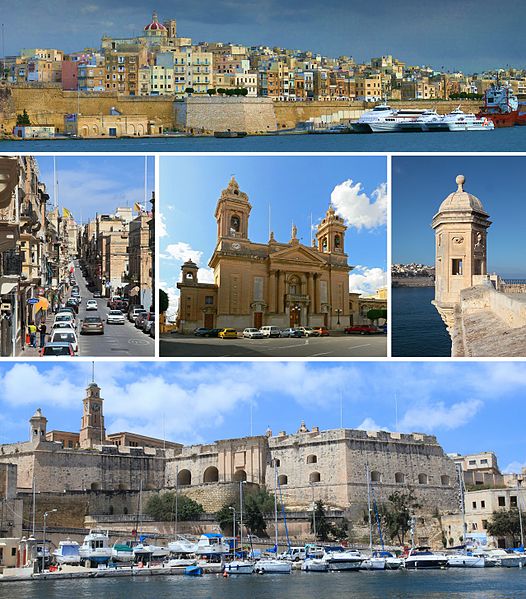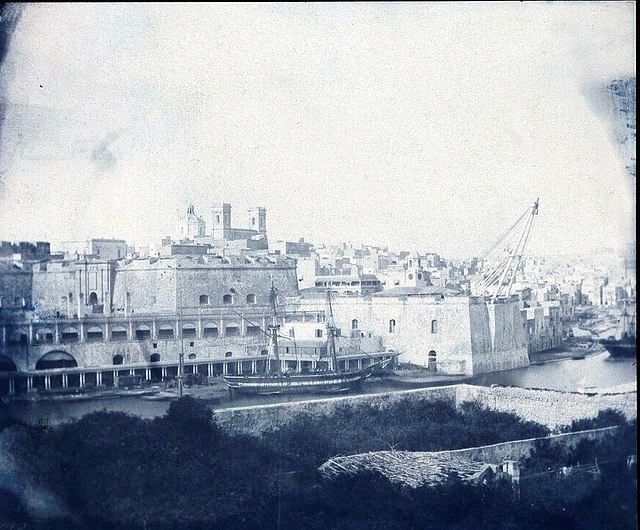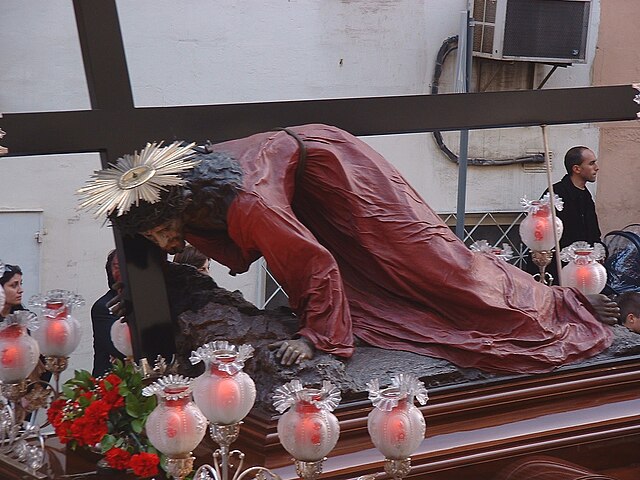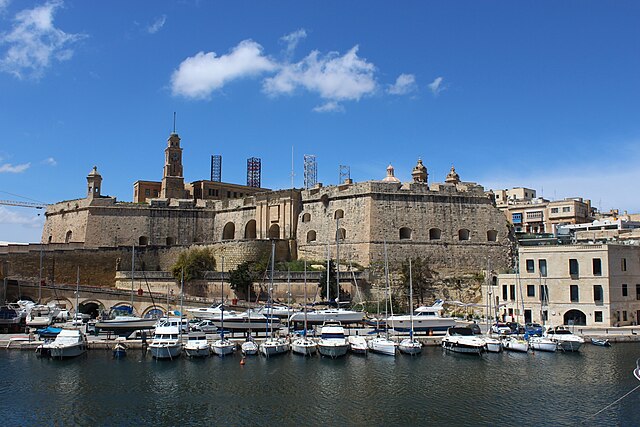Senglea, also known by its title Città Invicta, is a fortified city in the South Eastern Region of Malta. It is one of the Three Cities in the Grand Harbour area, the other two being Cospicua and Vittoriosa, and has a population of approximately 2,720 people. The city's title Città Invicta was given because it managed to resist the Ottoman invasion at the Great Siege of Malta in 1565. The name Senglea comes from the Grand Master who built it Claude de la Sengle and gave the city a part of his name. While Senglea is the 52nd most populated locality on the island, due to its incredibly small land area, it is the 2nd most densely populated locality after Sliema.
From top: Skyline, typical street, Parish Church, Gardjola, Land Front
Dockyard at Senglea in 1846, calotype by Calvert Jones
Victory St in Senglea, 1880
The Redeemer
Fortifications of Senglea
The fortifications of Senglea are a series of defensive walls and other fortifications which surround the city of Senglea, Malta. The first fortification to be built was Fort Saint Michael in 1552, and the majority of the fortifications were built over the next decade when it was founded by Grand Master Claude de la Sengle. Modifications continued until the 18th century, but large parts of the fortifications were demolished between the 19th and 20th centuries. Today, all that remain of Senglea's fortifications are the seaward bastions and part of the land front.
Senglea Land Front
Sheer Bastion (il-Maċina)
St. Michael Bastion and the damaged curtain wall which originally linked it to Sheer Bastion
St. Michael Bastion (the site of the clock tower was originally Fort Saint Michael)








